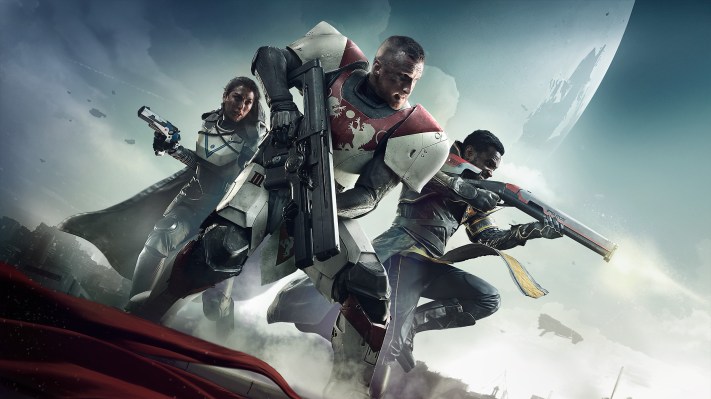After buying Bungie earlier this year, Sony is moving fast to integrate the company’s expertise into its broader vision.
In an investor presentation Thursday, Sony Interactive Entertainment CEO Jim Ryan outlined a near future for the company that focuses heavily on continually updated online games inspired by Destiny, Bungie’s long-running hit.
Sony expects to spend 49% of its PlayStation Studios development budget on live service games by the end of the year. By 2025, Sony plans to bump that to 55%, up from just 12% in 2019. By the end of 2025, Sony projects that it will have 12 different live service games of its own, up from just one now.
The company declined to answer questions from TechCrunch about which of its franchises might get the live service treatment, but the presentation cited God of War, Horizon Forbidden West, Spider-Man, The Last of Us and Uncharted in a list of its noteworthy single-player first-party titles. Sony-owned studio Naughty Dog has been hiring for a standalone multiplayer game, so a new game could indeed emerge out of The Last of Us or Uncharted’s virtual worlds.
Bungie is best known for creating the Halo franchise, though most recently the studio has become synonymous with Destiny, a fresh sci-fi series the company developed after leaving Halo with Microsoft. Like Halo, Destiny is a futuristic first-person shooter with precise, satisfying mechanics. But Destiny’s real appeal is Bungie’s impressively seamless online multiplayer experience that brings players into central hubs where they can explore and run missions together, making it more akin to World of Warcraft than a traditional FPS like Call of Duty.
Three years after splitting with Microsoft, Bungie signed onto a 10-year partnership with Activision. The company eventually split with Activision, too, paving the way for Sony to snap it up earlier this year for $3.6 billion. Bungie will remain a standalone game studio on the other side of the deal, à la Naughty Dog.
Just after the Bungie acquisition was made public, Sony CFO Hiroki Totoki confirmed the company’s plan to weave Bungie’s live game service know-how into its broader gaming offerings.
“The strategic significance of this acquisition lies not only in obtaining the highly successful Destiny franchise, as well as major new IP Bungie is currently developing, but also incorporating into the Sony group the expertise and technologies Bungie has developed in the live game services space,” Totoki said.
In bringing Bungie under its wing, Sony is buying a lot of knowledge about how to build online multiplayer games that expand over time, keeping players coming back for more. This kind of experience, usually called a “live service game,” explains how Fortnite is still one of the world’s most popular games years after it first made headlines for luring casual gamers and hardcore streamers alike into its colorful, chaotic world.
It’s also an extremely lucrative business model. Live service games generally have an in-game storefront that invites dedicated players to buy digital goods like character skins and clothing. Those assets cycle in and out, creating scarcity and nudging players to spend real cash to collect them. In a given content season, players in games like Destiny 2 and Fortnite can pay to earn a special set of these cosmetic virtual goods with a “battle pass.”
Some live service games, like Final Fantasy XIV, require players to pay for a monthly subscription to access the most recent content, while others are free to play. Happily, these days, most free-to-play games no longer require a paid subscription through Microsoft or Sony’s own premium subscription services.
Live service games add expansion content over time, and players often pay to access the new stuff, even while the core game remains mostly the same. For game makers, the real allure is maintaining a game that can live and grow over time, raking in revenue for years rather than burning bright and fizzling out a few months postlaunch.
